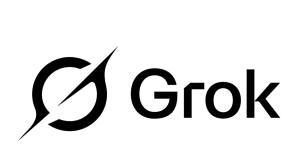Google has announced the introduction of Device Bound Session Credentials (DBSC) to secure Chrome users against cookie theft.
In January we reported how hackers found a way to gain unauthorized access to Google accounts, bypassing multi-factor authentication (MFA), by stealing authentication cookies with info-stealer malware. An authentication cookie is added to a web browser after a user proves who they are by logging in. It tells a website that a user has already logged in, so they aren’t asked for their username and password over and over again. A cybercriminal with an authentication cookie for a website doesn’t need a password, because the website thinks they’ve already logged in. It doesn’t even matter if the owner of the account changes their password.
At the time, Google said it would take action:
“We routinely upgrade our defenses against such techniques and to secure users who fall victim to malware. In this instance, Google has taken action to secure any compromised accounts detected.”
However, some info stealers reportedly updated their methods to counter Google’s fraud detection measures.
The idea that malware could steal authentication cookies and send them to a criminal did not sit well with Google. In its announcement it explains that, “because of the way cookies and operating systems interact, primarily on desktop operating systems, Chrome and other browsers cannot protect them against malware that has the same level of access as the browser itself.”
So it turned to another solution. And if the simplicity of the solution is any indication for its effectiveness, then this should be a good one.
It works by using cryptography to limit the use of an authentication cookie to the device that first created it. When a user visits a website and starts a session, the browser creates two cryptographic keys—one public, one private. The private key is stored on the device in a way that is hard to export, and the public key is given to the website. The website uses the public key to verify that the browser using the authentication cookie has the private key. In order to use a stolen cookie, a thief would also need to steal the private key, so the more robust the “hard to export” bit gets, the safer your cookies will be.
Google stated in its announcement that it thinks this will substantially reduce the success rate of cookie theft malware. This would force attackers to act locally on a device, which makes on-device detection and cleanup more effective, both for anti-malware software as well as for enterprise managed devices.
As such, Device Bound Session Credentials fits in well with Google’s strategy to phase out third-party cookies.
Development of the project is done in the open at Github with the goal of DBSC becoming an open web standard. The goal is to have a fully working trial ready by the end of 2024. Google says that identity providers such as Okta, and browsers such as Microsoft Edge, have expressed interest in DBSC as they want to secure their users against cookie theft.
We don’t just report on threats—we remove them
Cybersecurity risks should never spread beyond a headline. Keep threats off your devices by downloading Malwarebytes today.










